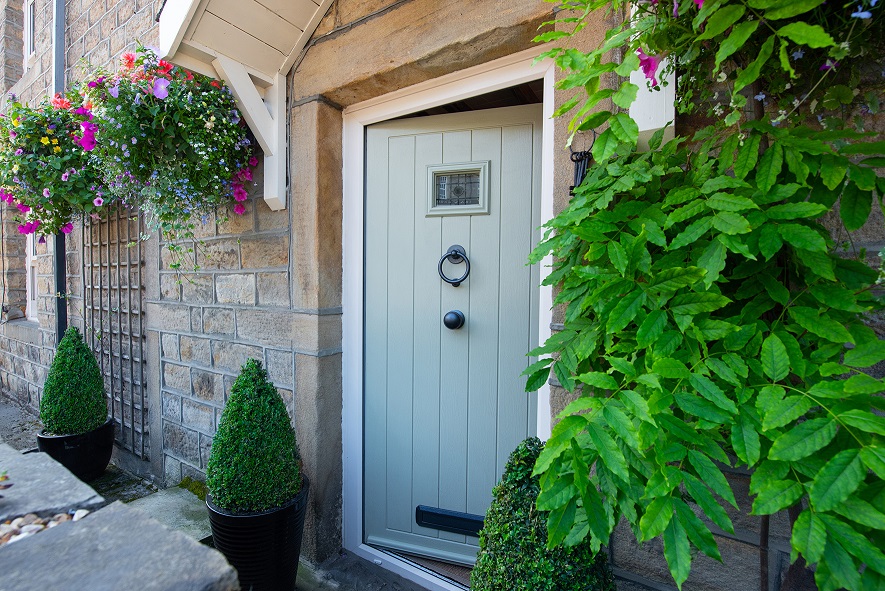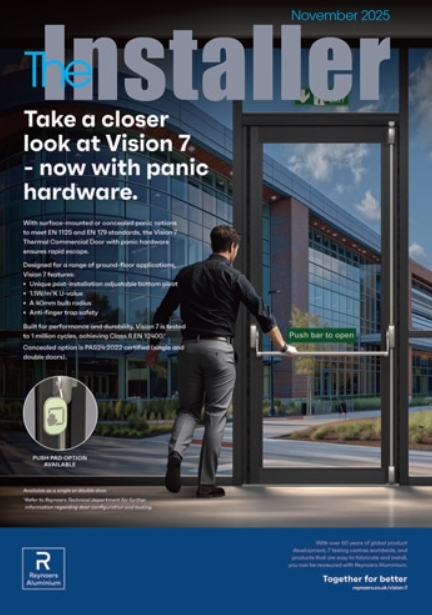Enviro Game Changer

When it comes to making more sustainable product choices, it’s not always easy to see the wood for the metaphorical trees. Environmental Product Declarations could be about to change all that. Andrew Speakman, commercial director at Endurance Doors, explains more.
From droughts and devasting wildfires to rising sea levels and severe flooding, it seems that, on an all-too regular basis, the news is dominated by reports of a catastrophic, climate change-induced event, somewhere in the world.
Against this backdrop, it’s perhaps unsurprising that today’s domestic and commercial customers in the windows and doors market are looking for greater transparency of a product’s environmental impact.
Increasingly, they want the reassurance of knowing that the goods they are purchasing or specifying aren’t just fit for purpose - they are also environmentally responsible.
That’s where Environmental Product Declarations (EPDs) come in.
No more comparing apples with oranges
An EPD offers comprehensive information on a product’s environmental performance and importantly, it does so in a standardised way. This makes it easier to draw like-for-like comparisons as well as more difficult to overstate the green credentials of a product through carefully skewed marketing.
Any opportunity for greenwashing is further eliminated by the focus of EPDs on all the stages of a product’s lifecycle.
For example, at first glance, a product made from a renewable material such as wood might appear sustainable. However, if the timber used causes deforestation, loss of habitat or the product is shipped halfway around the world before it is used, then its levels of sustainability aren’t so impressive overall.
For this reason, an EPD looks at a number of separate areas including:
Production - this can include evaluating the environmental impact of securing the necessary raw materials, their transport to the relevant production facility and the product’s manufacturing.
Usage - which looks at the environmental impact of the product during its time in use. This might entail assessing any emissions it produces or resources - like water or energy - it consumes as part of its operation and maintenance.
End-of-life - finally, an EPD looks at the decommissioning and disposal of a product including what material can be recovered and what waste is created.
Like an LCA. Only better?
You may be thinking that an EPD sounds similar to a Life Cycle Assessment (LCA). This is not a coincidence. An LCA is required to produce an EPD but an EPD entails disclosing less potentially sensitive, company-specific information. For the manufacturer, this offers significant benefits as it can demonstrate the environmental performance of products without revealing trade secrets in the process.
Types of EPD
There are different types of EPD. Some can be generic and look at multiple supply chains for one product, whilst others are much more focused and product/individual supply chain specific.
This latter variant typically carries greater value due to this increased accuracy and specificity.
Their use of more finely honed information also means they are able to make a greater contribution towards securing the points required to achieve certification under schemes for sustainable built environments such as BREEAM and LEED.
Validation
Another powerful feature of EPDs is the need for them to be independently verified. Before they can be published, they must be reviewed by a third-party assessor to validate any facts or claims they contain.
Part of a visible commitment
Considering the numerous benefits of EPDs, such as their impartiality and their use of standardised, easy to compare information, they are now being offered by major players across the construction and fenestration industry.
This will soon include Endurance Doors and we actively welcome the concept of EPDs.
Endurance Doors
We already have a strong commitment to sustainability which is reflected in many ways - including our use of timber from responsibly managed, certified Scandinavian forests, our support of international conservation charity, the World Land Trust and the fact that we are a carbon balanced business.
EPDs will help us to build on that.
They will enable us to demonstrate the strength of our environmentally responsible approach – but in an even more effective and accessible way.
Picture: Endurance Doors’ cottage door
Article written by Cathryn Ellis
10th August 2023






.jpg)



.jpg)
.gif)
.jpg)

.jpg)



.png)



.jpg)
